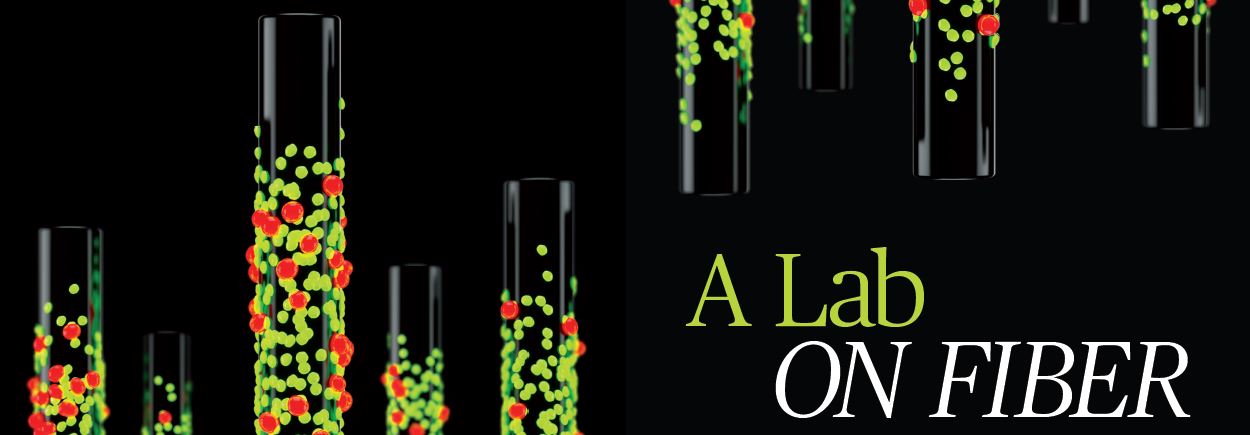CURRENT PROJECTS
Optical fibre monitoring and measuring systems from the nanoscale to the human scale
The overall objective of the research program is to develop a “universal” optical fiber-based sensing system that can be easily adapted to measuring a wide array of parameters with performance levels dictated by the trade-off between cost and both user requirements and competing technologies, without fundamental changes in the device configurations and instrumentation. This system will be flexible enough to find applications in environmental monitoring, biomedical devices, structural health monitoring, food safety, and manufacturing process monitoring. The novelty of this approach lies in addressing a major impediment to the growth of the fiber optic sensor market, i.e. the fragmentation of technologies and lack of standardization: every system currently developed requires different tools and techniques, and thus different training of users. This is all very costly to end users and markedly different from the high level of standardization for electrical sensors. Evidence of this problem is reflected in a recent white paper from the IEEE Standards Association that lists dozens of different (mostly proposed but not necessarily accepted) fiber optic sensor standards in various fields of applications. A successful outcome of the research program would be the availability of a catalogue of off-the-shelf sensing solutions with standardized device designs and a limited number of well-identified system interfaces adapted to each application.
This objective will be achieved by research on new tools and techniques to take advantage of the vast amount of information contained in the optical transmission spectrum of a single Tilted FBG. In all of the aforementioned application areas, we already have demonstrated evidence that such fiber grating sensors can provide useful and accurate information, but this was obtained for ideal test cases under well controlled laboratory conditions and by customized data extraction and analysis, requiring complex and time consuming adjustment of device designs and data extraction methods for each application. However, it is only recently that the full potential of the tilted fibre Bragg grating device configuration has been clarified: In short, the single mode fibre is used locally as a highly multimode device where the grating causes coupling of the core mode to a large number of cladding mode families that show up as resonances in the transmission spectrum with very precise phase velocities and polarization states.
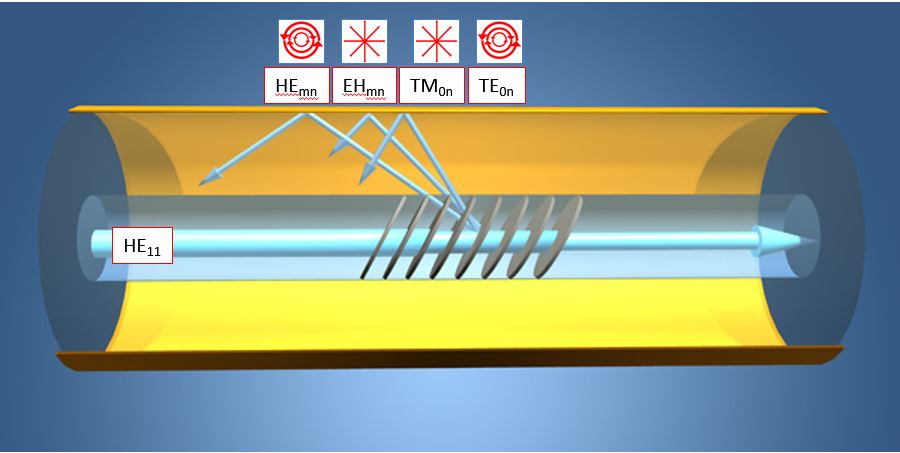
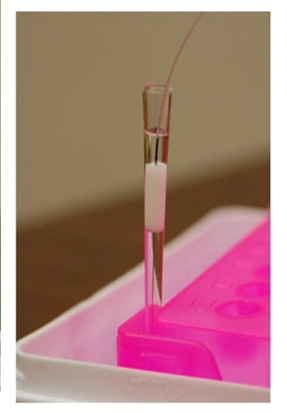

Recent results include:
Monitoring the state of charge of supercapacitors for renewable energy storage:

Detecting circulating living cells:
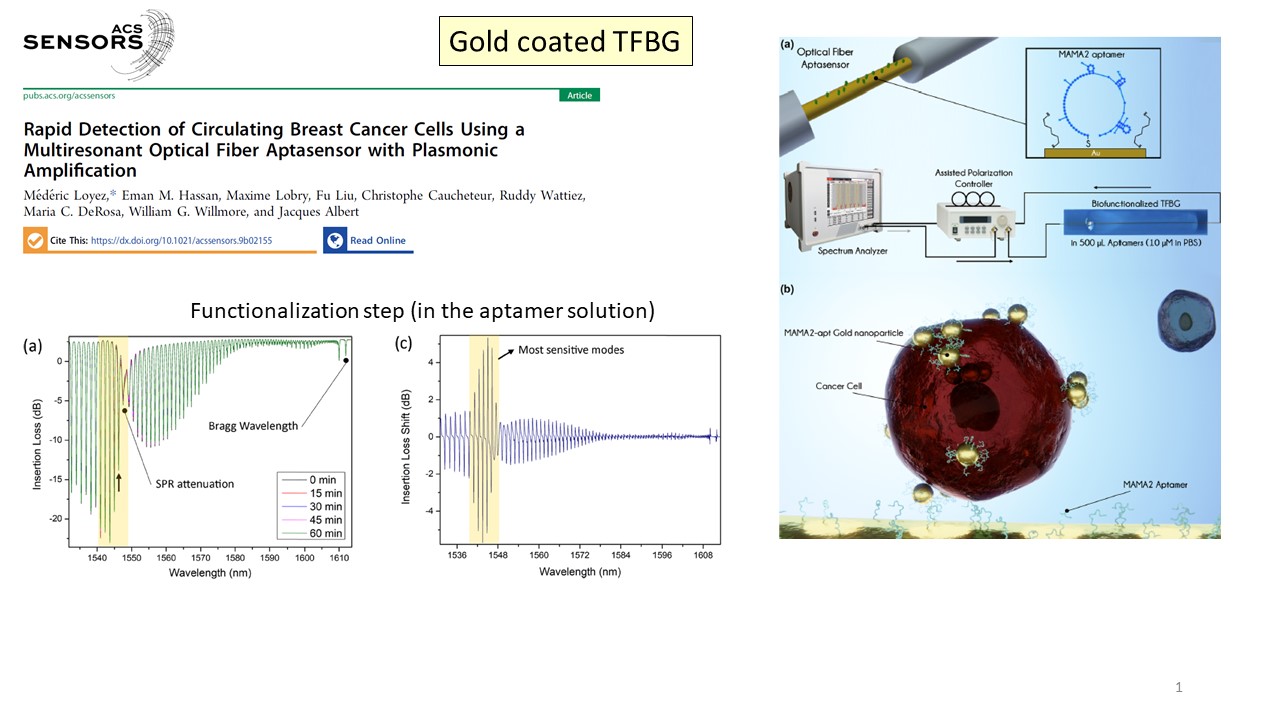
Advanced metrology and predictive modelling of TFBG responses (unpublished yet, in progress):
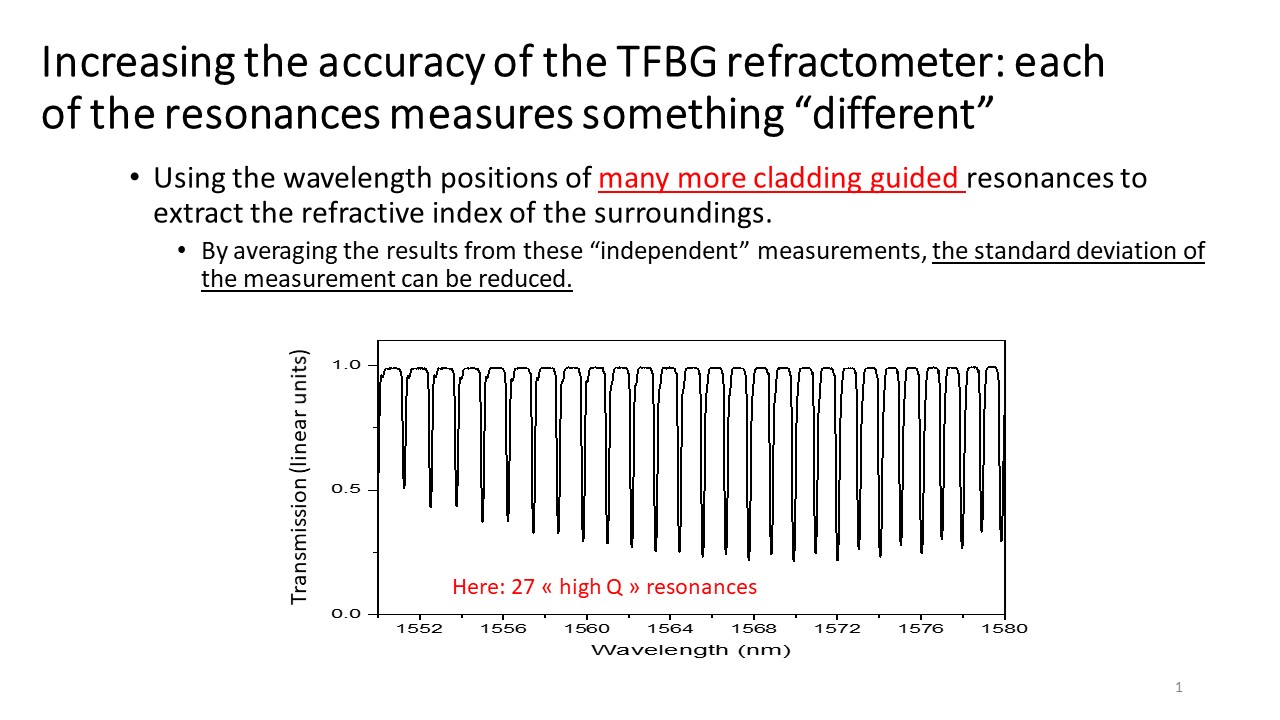
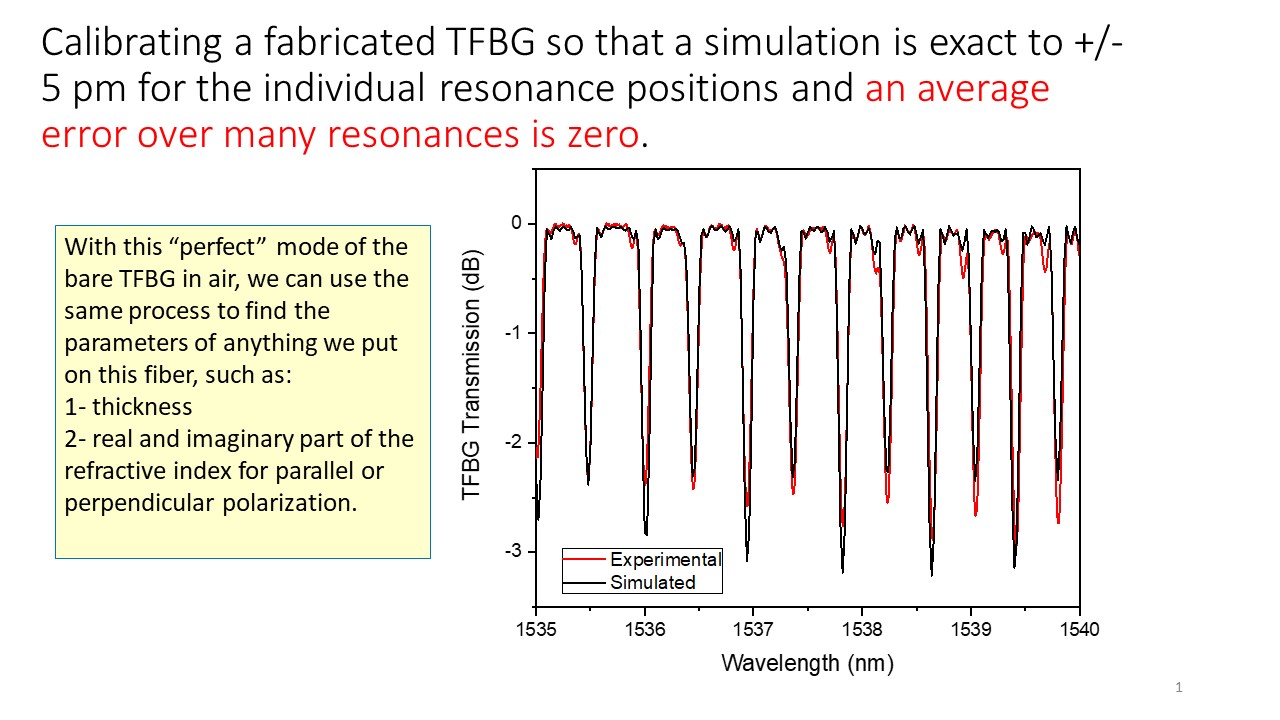
Dynamic optical bistability in graphene-coated TFBGs:
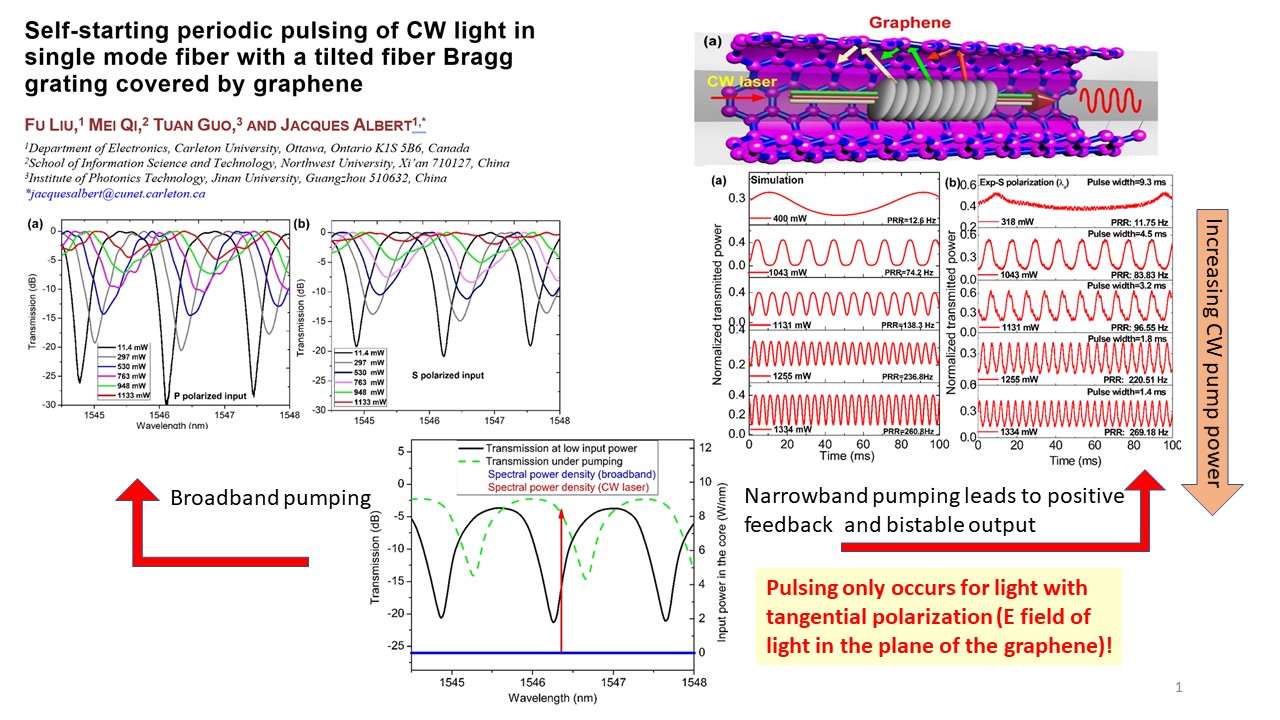
Ultra-thin deposited film metrology (unpublished work);
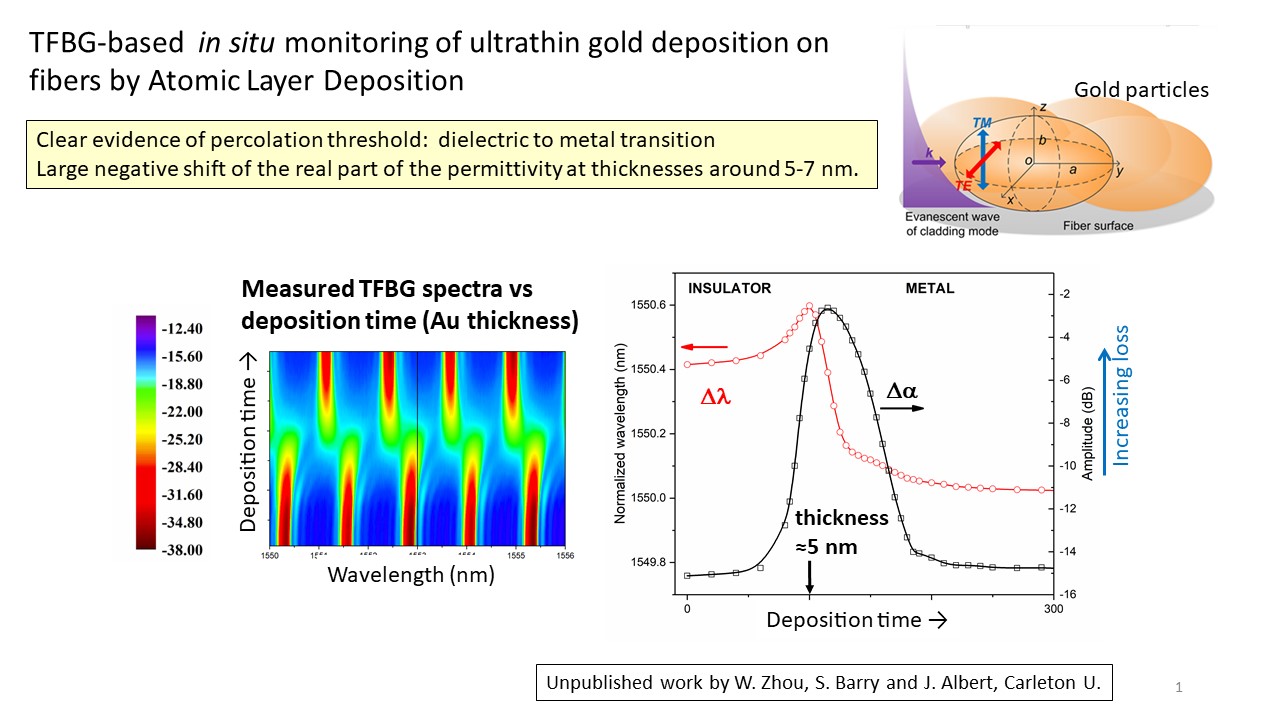
Other projects:
1-All-fiber frequency doubled light sources from engineered glass layers
Using stacks of nanoscale doped-glass layers to create artificial crystals, we have developed materials that can generate visible light from infrared laser beams.
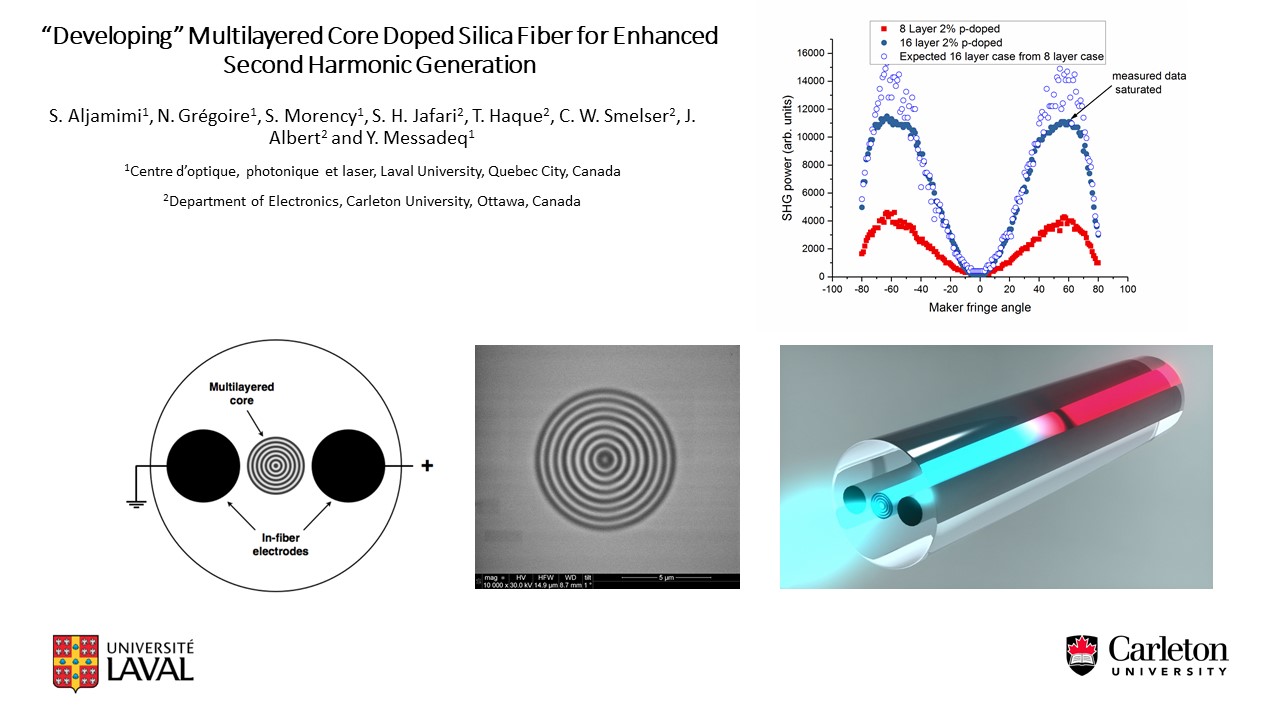
2-Fiber grating arrays to detect high impact forces
Using fiber Bragg grating arrays embedded into elastomer materials and packaged in metal casings, kN level forces occurring on tens of microseconds time scales can be detected reliably.

IEEE SPECTRUM (APRIL 2014): A biochemical laboratory on an optical fiber
